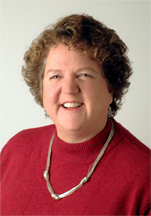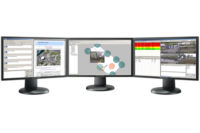
Always available online training aids home tech installers, their firms and clients, contends Helen Heneveld, founder of Bedrock Learning.

Home energy management is just one emerging home tech application. It’s a common sense money saver for new construction homeowners as well as a retrofit. And it is one that can naturally integrate with home security, points out Helen Heneveld.
While smartHOME firms do a super job of entry-level and in-house training, there are numerous advantages in tapping solid outside resources, which know the basics, have identified new tech advances and specialize in effective teaching methods. A useful innovation embraced by top universities and corporate trainers is the “always available” online education – where an installer can work at his or her own pace, and stop and start until completion. That’s the mission and passion of Helen Heneveld, founder of Bedrock Learning, who boasts stepping stones ranging from structured wiring and multi-room audio to home networking, lighting controls and even project management, among others. Such experiences have a business bottom line: Everyone is on the same tech page; well-trained installers are more confident with less call backs; and the home tech firm can more quickly react to emerging opportunities, according to Heneveld.
Industry pioneer, mentor, residential tech expert and master educator, Heneveld takes great pride instead on spreading the word about something more basic – business. You can love the technology, sell and install the gee-whiz, but if you don’t have a business focus, you likely won’t succeed, contends Helen Heneveld. That’s at the core of her firm, Holland, Mich.-based Bedrock Learning, which provides comprehensive training solutions for home tech installers, sales, customer support, and other residential technology professionals. The bottom line is field-ready employees in the ever-evolving professionally-installed home technology sector.
In the industry since the 1980s, Heneveld says, “I was a dealer and installer. Now, with more than two decades under her belt, Heneveld boasts a myriad of training and curriculum experiences shared with many individuals, companies and associations. At Amherst Alarm, she says, “All go through the course; everyone learns; and all end up on the same page.” Beyond a bottom line with fewer call backs for the firm, “such learning strengthens their knowledge base” and the process shows that, at any home technology firm, well-trained staff can help smartHOME firms “expand into new areas such as home networking.”
Industry pioneer, mentor, residential tech expert and master educator, Heneveld takes great pride instead on spreading the word about something more basic – business. You can love the technology, sell and install the gee-whiz, but if you don’t have a business focus, you likely won’t succeed, contends Helen Heneveld. That’s at the core of her firm, Holland, Mich.-based Bedrock Learning, which provides comprehensive training solutions for home tech installers, sales, customer support, and other residential technology professionals. The bottom line is field-ready employees in the ever-evolving professionally-installed home technology sector.
In the industry since the 1980s, Heneveld says, “I was a dealer and installer. Now, with more than two decades under her belt, Heneveld boasts a myriad of training and curriculum experiences shared with many individuals, companies and associations. At Amherst Alarm, she says, “All go through the course; everyone learns; and all end up on the same page.” Beyond a bottom line with fewer call backs for the firm, “such learning strengthens their knowledge base” and the process shows that, at any home technology firm, well-trained staff can help smartHOME firms “expand into new areas such as home networking.”
There are other business benefits to having a workforce that goes through third-party training and learning. APX Alarm, for one, sees value in Bedrock Learning’s help. “CEUs awarded to employees play a role in various states to keep licenses up-to-date,” Heneveld points out.
Heneveld speaks and consults worldwide in the converging home systems industry, sharing her knowledge and experience. She holds degrees in education and an MBA from the University of Michigan and is well qualified with numerous industry certifications that include CEDIA Certified Instructor.
“When I started the company, I knew there was a shortage of qualified installers with a grasp of the basics,” Heneveld says. To serve a mass market, you just have to have a mass installation crew with an understanding of the fundamentals as well as a way to keep up-to-date.”
Certification, according to the educator, is “still in the infancy stage but growing. You need to pick the type of certification that makes the most business sense to you and your firm.” While all are high quality, there are differences. “Some aim at the high end, which may prove too much for involvement by all installers at the larger firms with many employees.”
There is growth, diversification and excitement in the field, according to Heneveld. Parks Associates spotlighted a measurable shift, even in a challenging economy she points out. For example, U.S. home systems integrators continue to adjust to compensate for declines in new home construction and consumer spending by diving into the green and retrofit markets. In a recent report, conducted as a joint effort from Parks Associates and the Custom Electronic Design & Installation Association (CEDIA), home tech firms are concentrating more on preexisting homes, retrofit and lower-cost solutions. Another area: energy management, where integrators could serve an important role linking consumers to utilities. Smart energy methods have always been around. “We did it in the past. It makes even better sense today, and so does the interface to home security, which knows when people are home or not,” Heneveld observes.
Such new areas and market targets, coupled with the need to continue to focus on the technology and business of home systems, makes ongoing training and education an even more essential element.
However Heneveld warns industry firms to take care when it comes to the “gee-whiz” factor. “Products and companies come and go. You have to have common sense for your business to grow and succeed. I am a believer in being conservative when it comes to the latest and newest. It may not be the greatest. It may turn out to be vaporware.”
She encourages the industry to take a more pragmatic position when it comes to applying technologies to lifestyles in the home. “Look for what really makes a difference for your homeowner clients” and embrace the technologies around those prerequisites.
Still, asked to guess what is coming down the road that could open yet another home technology door, Heneveld comments, “We used to call it the digital home and then the connected home. But the next step? It may prove to be the home talking to the outside world through myriad wireless communications means and mobile devices. For many homeowners, it is a mindset of wanting to do everything, anywhere, anytime and through any type of device.”
Whatever the economic, tech and consumer changes and challenges, Heneveld continues to see an entrepreneurial spirit beating strong within the home tech industry. Existing businesses are getting stronger and smarter and new faces, often coming in with strength in IT, are making their mark, too. “The industry is so diverse. The key is to realize what you will do and what you won’t do. Edit your menu -- fewer brands and fewer models -- to be better at it.”
She adds, “Implement the 10-15 percent rule. It’s the psychology of technologies. People most often use only 10-15 percent of the features of a given product or system.” It’s always time to figure out that sweet spot and work it.




